Brother Phap Bieu reflects on how a Plum Village community or Sangha can continue to keep our spiritual tradition alive, stay true to the essence of the teachings and also be adaptable and flexible to the needs of the times.
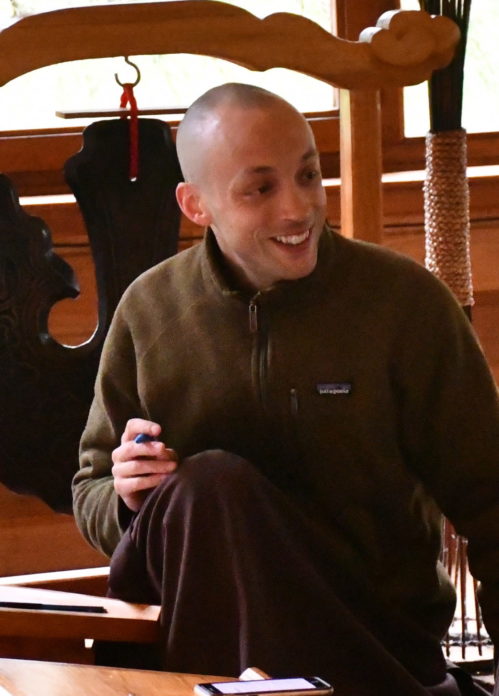
Nourishing the youthfulness of a spiritual community
I’ve always asked myself the question, “Is Buddhism a religion?” or, “Is Plum Village a religious organization?” I do not ask it out of a simple feeling of curiosity. For me, this has always been a difficult question, upon which I often entertained quite gloomy and heavy thoughts. The reason for this is that if I think that Buddhism actually is a religion then a part of me starts shouting, “I don’t want to be part of this!” My family, as well as my society, taught me to shun religion. And as a young teenager I quickly developed a resistance to belief and to ceremonies. Faith was for me the equivalent to switching off my brain and trusting somebody else to think for me. “If I cannot prove or experience something by myself then why should I trust what my religion or tradition is asking me to believe in?” For me, the term “religion” always came with a connotation of superstition and dogmatism, and even to this day I naturally move away from it as much as possible.
Of course, I am not the first person to have had this problem. I grew up in a country and a society that, over the past century, had to learn to grapple with the ever more bizarre findings of science. In science, there is something very appealing which can hardly be found in our world religions. This is not so much about the actual discoveries that science is making in many different fields, but rather about the attitude that science adopts. In science you can, and you should, argue about things. As long as you can prove it, you can disagree with what your teacher tells you. The scientific culture inculcates in you the wish to have a new breakthrough, rather than encouraging you to humbly devote yourself to understand the thoughts of great teachers of the past.
At least superficially, the attitude of religion is much less attractive to a young mind. You need to believe in God, or else you will go to hell. You need to believe in reincarnation, or else you will not have the motivation to do real practice. All questioning is discouraged, and all internal struggles are to be suppressed because they would never be accepted by your companions. I do not question that there are people who have a much more mature attitude toward their religious beliefs, but these people tend to be very rare. However, I was lucky to meet a teacher who had been deeply influenced by science and who was skillful in presenting a face of Buddhism that was very inspiring to me.
…we hear of many teachers, all proclaiming a different doctrine and claiming that that’s the truth. How can we distinguish who is really speaking the truth and who is a charlatan? Who should we believe in?
Kalama Sutta
The Kalama SuttaSee Anguttara Nikaya 3.5is a beautiful and clear example of the Buddha’s attitude toward the spiritual life. One day a group of people came to him and asked: “Dear Buddha, we hear of many teachers, all proclaiming a different doctrine and claiming that that’s the truth. How can we distinguish who is really speaking the truth and who is a charlatan? Who should we believe in?” The Buddha could have said, “ I have the truth, you should believe me”, but instead he replied, “You should believe and have faith in those teachers whose teachings, once applied, actually work.” In other words, if someone is telling you to believe something that does not make you feel better, and does not further your spiritual growth, then you should not listen to him anymore. So, in some sense, the spirit of early Buddhism was clearly quite scientific and pragmatic. This spirit of enquiry, is what I consider to be one of the fundamental differences between traditional religions and spiritual movements.
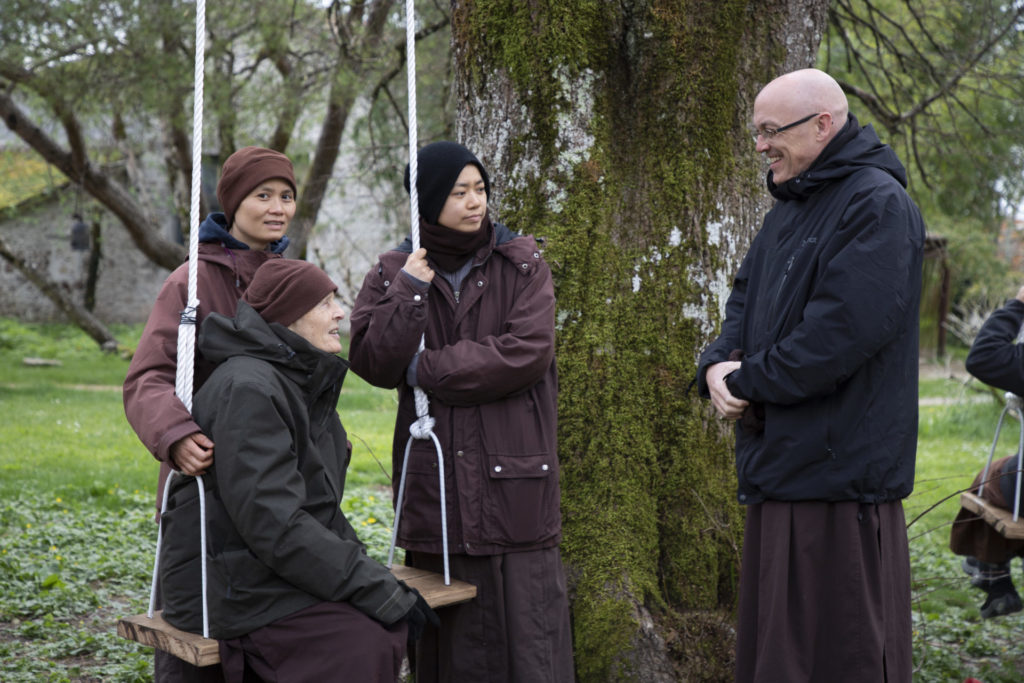
The Original Sangha
Members of the Buddha’s original sangha did not see themselves as religious people. They lived the life of spiritual seekers and used their time and energy to conduct rigorous meditation experiments under the Buddha’s guidance. At that time the Buddha did not appear as a God-like being. He was a man among other men, and people simply characterized him by his composed and silent bearing. This is why he was called Shakyamuni, which in Sanskrit means, “The silent one of the Shakya clan”. It was by virtue of being deeply human that he was able to touch people’s hearts and to inspire them to follow his path of practice, and not by resorting to flashy displays of supernatural powers.He repeatedly criticized monks who would make show of their spiritual powers and even said that he “disliked, rejected and despised” these faculties. See Dīgha Nikāya 11 He openly discouraged having an excessively devotional attitude toward himself, and would constantly praise those monks and nuns who had reached a state of spiritual independence and self-reliance.
If we dare a little, we could even say that the Buddha was probably quite an introverted person. He enjoyed peaceful and quiet places, and scolded his disciples when they were making too much noise.See Majjhima Nikāya 67 and Dīgha Nikāya 9When I think about the Buddha in these terms I feel a very intimate and warm connection with him. He does not display the qualities of a religious leader, and yet there is something so genuine and beautiful about the way he lived his life.
After the Passing of the Teacher
From the Buddha’s time until now, his image as well as his teachings have transformed multiple times. Very soon after his passing, the vast majority of his followers stopped valuing his pragmatic and scientific attitude. As Buddhists became ever more devoted to the Buddha’s words, they also became less interested in the living experience of Buddhist meditation. This can be seen as the birth of popular Buddhism, or as the mutation of the Buddha’s path into a world religion. People started only providing material support to express their devotion to the Buddha, the Dharma and the monastic Sangha rather than applying the practices in order to generate more happiness and wellbeing in their own lives.
Just a few centuries after the Buddha’s death, the Mahāyāna school viewed the Buddha as an omniscient and all-pervading God which is the very nature and essence of all things. In the meantime, the Theravada school, while formally remaining attached to the view that the Buddha was a human being, practically started to ascribe to him all kinds of supernatural powers and in the end was quite satisfied with saying that he is “supreme among all humans”, which easily sounds like a disguised way to deify him. In other words they were saying that although the Buddha is a human being, no other human can be like him. This implied that while he could reach full-blown Buddhahood, normal people like us could only hope to reach the stage of Arahatship.
By the time Buddhism became widely spread in India, the vast majority of Buddhists simply cared about creating merits so they could expect wealth, health and fortune in this life, and an auspicious rebirth in the next. However, a very small group of monks and nuns quietly fought against the conservative Buddhist institutions of their time in order to maintain the essence of the teachings alive, and to deliver it in new language and forms to the following generation. This is the legacy of great Buddhist teachers, starting from venerable Ananda, the Buddha’s own attendant, all the way to Nagarjuna, Vasubandhu, Linh Chi, down to our own teacher, Thầy.

Having acknowledged all this, if we come back to our original question, “Is Buddhism a religion?” we have to accept that for many people Buddhism does acquire this function. This is what Thầy would sometimes provokingly call “our grandma’s Buddhism”. This kind of Buddhism is there to offer us material gains like getting a job or bearing a child, and once we become old and sick it reassures us and comforts us with the promise of a beautiful continuation after our death. Some people are satisfied with this, and I believe that we should not disregard this manifestation of the teachings. After all it does help people to suffer less by filling their lives with meaning and positive values like love for one another, non-violence, honesty and respect.
Popular Buddhism might even offer an important contribution to society and the planet by encouraging people, among many things, to eat less meat and reject war as a means of resolving conflicts. However, as practitioners who want to taste the best and deepest fruits of the path of meditation we cannot be satisfied with just this. Luckily, thanks to endless generations of spiritual teachers, the original message and aspiration of the Buddha did survive to this day and, if we are determined to look for it, it can still be found.
Luckily, thanks to endless generations of spiritual teachers, the original message and aspiration of the Buddha did survive to this day and, if we are determined to look for it, it can still be found.
Around the world there are still a great number of communities of spiritual resistance, devoted to cultivating the deepest and most beautiful seeds that can be found in human beings. But I would like to go one step further and ask, “How long did it take for the Buddha’s teachings to turn into a religion?” If we read the sutras carefully we can recognize that there are signs of this change happening even while the Buddha was still alive. However, the pivotal moment can probably be identified as the “Council of the Five Hundred”, where the conservative faction of the Buddha’s disciples clearly took a dominant role.This can be deduced by the decisions that were made by the council, among which there was the decision not to revise the monastic precepts as the Buddha himself had wished. See Four Part Vinaya, chapter on the “Council of the Five Hundred”.This shows us that sometimes one generation is enough for a lively and dynamic spiritual community to turn into a religious organization, and history offers us countless examples of this. However, Buddhism did not fossilize and die. Thanks to the courage, determination, and the insight of a great number of monks, nuns and lay people, the essence of the teachings did survive to our days.

Renewing Buddhism
This is very relevant to us because the Plum Village tradition was, since the very beginning, a reform movement which had the aspiration to renew the Buddha’s teachings and to make them more effective and applicable for our modern society. Our teacher, in his teaching career, was met with constant opposition and obstruction from the side of the more conservative Buddhist institutions. But he succeeded nonetheless in creating a beautiful and flourishing community, where he could clear the Buddha’s teachings from cultural influences and superstitions which were no longer adapted to our modern world.
Thầy, like the Buddha was not interested in giving us some belief for us to grasp at. He saw the spiritual path as an endless exploration of the mind and of phenomena, and always discouraged his students from getting too attached to views and ideas. This spirit is so important to us that Thầy made it the topic of the first three of the 14 Mindfulness Trainings with it:
Aware of the suffering created by attachment to views and wrong perceptions, we are determined to avoid being narrow-minded and bound to present views. We are committed to learning and practicing nonattachment from views and being open to other’s insights and experiences in order to benefit from the collective wisdom. Insight is revealed through the practice of compassionate listening, deep looking, and letting go of notions […]
But it is easier said than done; we are also human beings and we should remind ourselves that it is part of our own nature to attach ourselves to views, notions and religious beliefs.
Buddhism and Science
Neuroscientists have observed that the brain structures that are involved in religious thinking and belief are the same structures involved in regulating and interpreting social interactions. Therefore, they suggest that religious thinking evolved in the human species as a mechanism of social cohesion and cooperation. It is natural and expected that large groups of people will develop religious beliefs.
I am convinced that this is not only true for spiritual communities, but for any large group of human beings that decide to share a somewhat similar lifestyle or world view. Together with the difficult realization that Buddhism is and remains a belief system for most people, we can console ourselves a little by seeing that this is happening a little everywhere. Even science, which prides itself in being the cure to religious thinking and dogmatism, is not free from this tendency. Max Planck, once said: “A new scientific truth does not triumph by convincing its opponents and making them see the light, but rather because its opponents eventually die, and a new generation grows up that is familiar with it.” When I read this sentence I can feel all the frustration of a young scientist having to confront a dogmatic environment which was very suspicious of innovation. This makes me touch a warm feeling of brotherhood toward him, because I sense that growing up as a young scientist can at times be just as frustrating as growing up as a young monk.

Although Plum Village was born as a progressive community, everything is impermanent. Nothing assures us that in twenty or thirty years we will not become as dogmatic as any other religious organization. When Thầy was still actively engaging with our monastic community, he was a deep source of inspiration but he did not limit himself to that role. He was also there to provoke and challenge us. This is the work of a true meditation master, and it was through these challenges and provocations that we got to discover something profound about ourselves. However, since he is no longer there to challenge our habits and expectations, our relationship with him is slowly becoming more comfortable and ideal.
Keeping Our Vitality
Our teacher is no longer pushing our buttons, therefore it is much easier for us to become attached to our views and notions concerning the practice and the community. But while essentially we become more narrow-minded, formally we sound ever more loyal to the Buddha and our teacher, and enjoy evoking what they did or said to justify our beliefs. Most of the time when we add the words, “Thầy said…” to anything we are going to say, this can be practically translated as, “I already have the final answer, and I am not interested in having a dialogue with you about this issue”. In other places people might say, “Jesus said…” or “The Vinaya says…” or “the Bible says…”. The effect of these statements is invariably the same. Communication gets frozen by the cold wind of dogma and human emotions stop flowing and expressing themselves naturally and beautifully. Out of this attitude we create an environment full of social pressure and mutual judgement, where concepts of right and wrong become carved in stone, and spiritual practice itself becomes a duty rather than a pleasure.
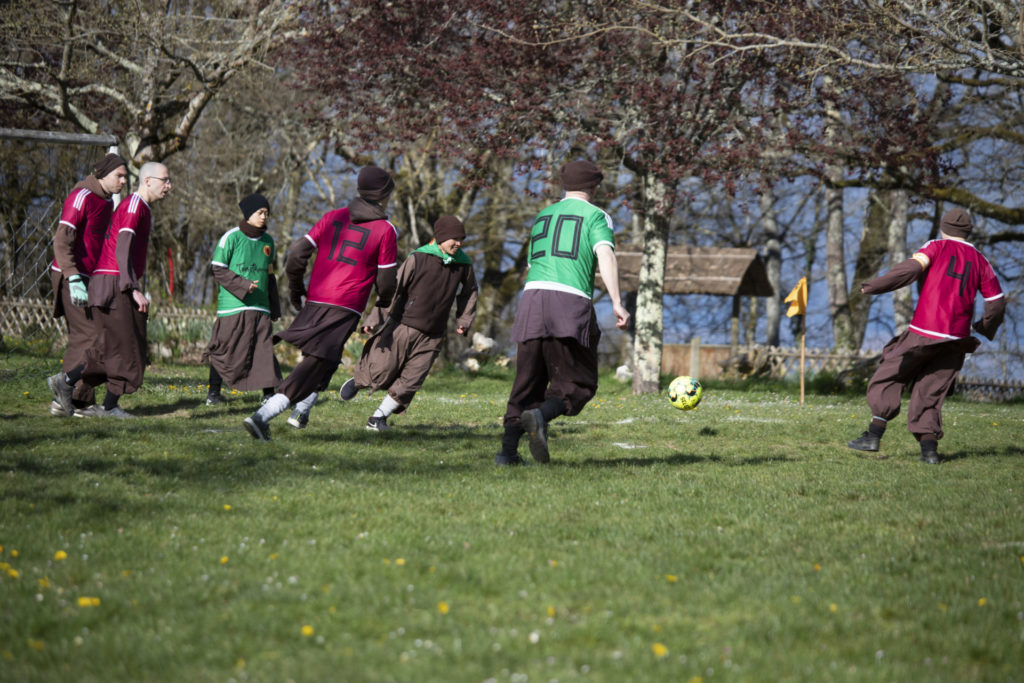
Just as we know of inspiring people who never succumb to old age and always remain youthful and vital in their spirit, we must trust that this is also possible for spiritual communities like ours. I believe that the secret for this lies in our capacity to identify sources of vitality and inspiration and in keeping an open and engaged contact with the younger generations in society. Another way to refresh our communities is to leave more space for young people to step up and voice themselves in the decision making of our communities. This is why in Plum Village the Bhikshu and Bhikshuni Councils, in which participate all monks and nuns that have completed their three years novice training, are the real decision making bodies, while the Dharma Teacher CouncilThe Dharma Teacher council nowadays is formed by all the Plum Village monastics who have been a bhikshu or a bhikshuni for more than five years and who have received the Lamp Transmission by the community.mostly expresses itself in matters of teaching and practice.
We practice to encourage each other and to notice and nourish each other’s qualities, rather than focus on the negative aspects and our habit energies.
In my monastic life I have been lucky enough to experience the beauty and simplicity of a community of practice, and up to this day I can see that this spirit is very much alive among the brothers with whom I live. In this environment we practice meditation out of a genuine wish to advance on our path of self-discovery, and not because we believe it’s “the right thing to do” or because we would otherwise feel judged. We practice to encourage each other and to notice and nourish each other’s qualities, rather than focus on the negative aspects and our habit energies. This is what I call a spiritual community. Having experienced the pure taste of this lifestyle I do remind myself, “Why would we want to turn this into a religion?” The truth is that it is beautiful and effective just as it is. There is something very essential about it.
Although in our tradition we speak of “the harmony of views” as one of the characteristics of a true sangha, this harmony of views is achieved by a collective effort of letting go of our individual notions, rather than through conforming to the leading tendencies. If we are openminded enough, we don’t need to believe the same things in order to live together in harmony. It is enough to be simple spiritual explorers, with different views and opinions, but sharing a profound desire to go further in our understanding of the mystery of the mind and of being alive on this planet.
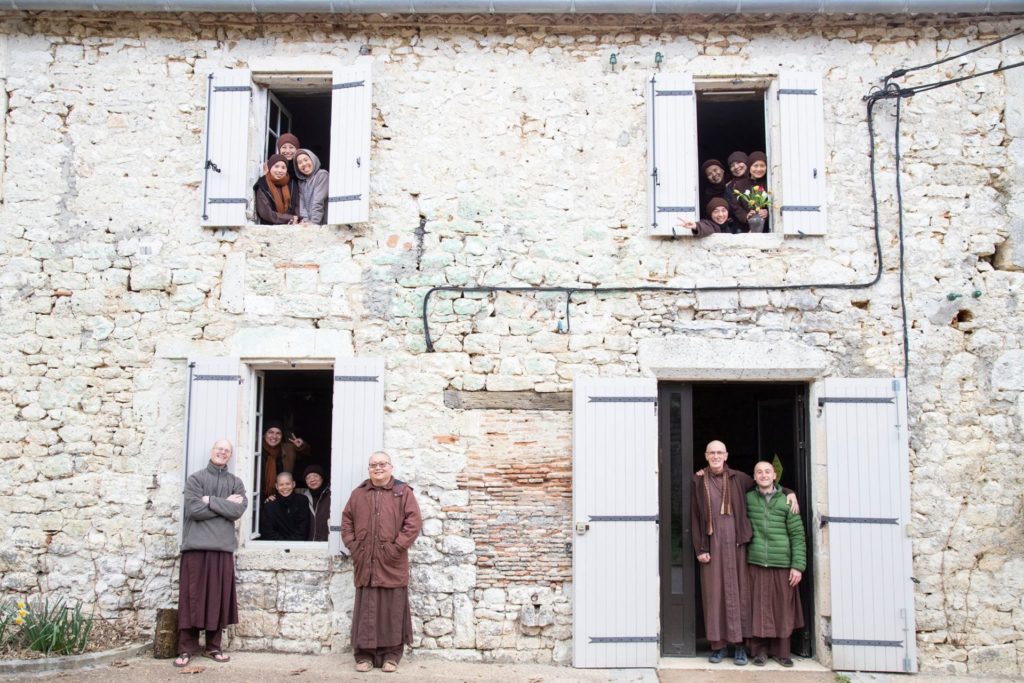


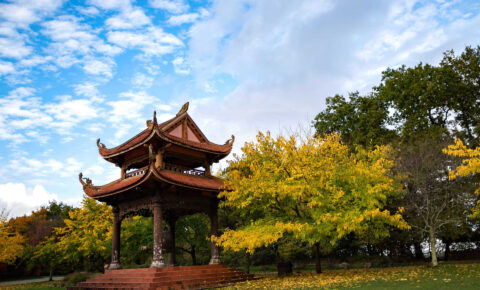
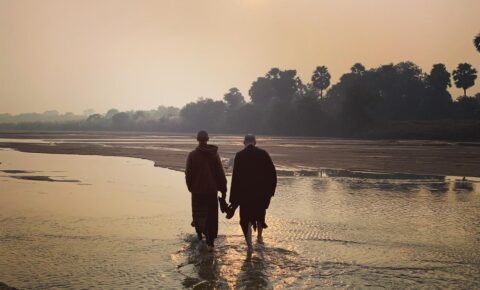
Share Your Reflections